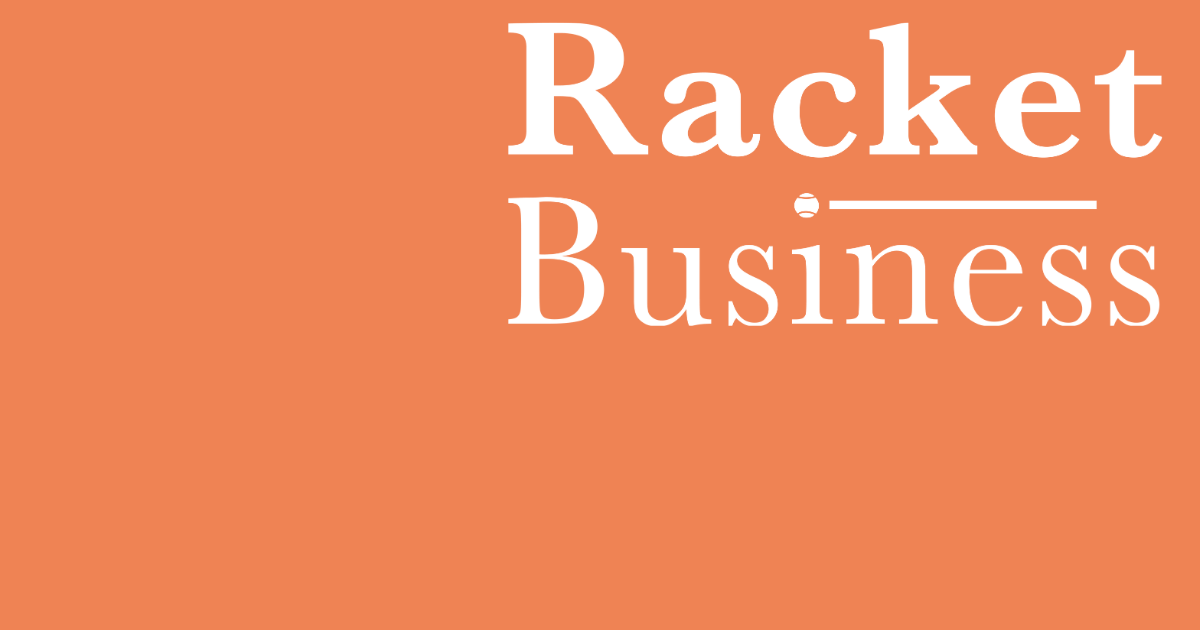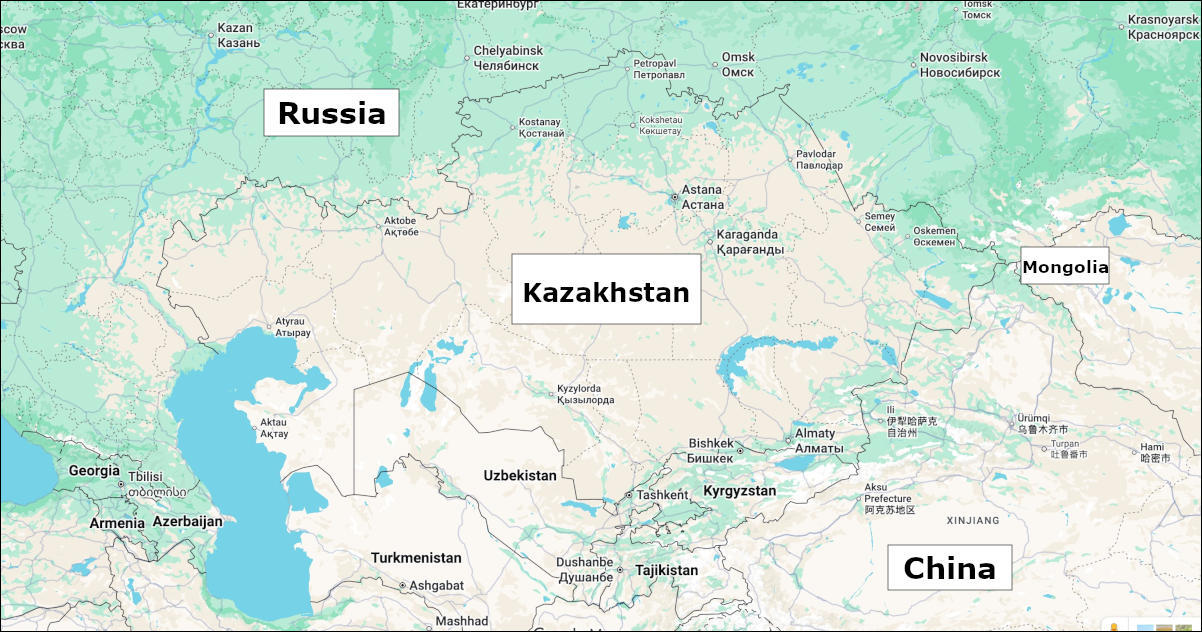- Racket Business
- Posts
- November 2025 issue
November 2025 issue
News, trends, conversations, and "holding their feet to the fire" since 2014

Hello dear readers, friends, and racket sports enthusiasts.
As we head into the final stretch of 2025, there’s a distinct buzz across the global racket-sports industry — from Kazakhstan to California, and from the pickleball courts to the padel cages of Europe. The November issue of Racket Business is packed with insights, stories, and updates that reflect just how fast our industry is evolving.
As always, we open with Rich’s latest Publisher’s Notes, including thoughts from the PTR/PPR International Conference, a few “things that make me go hmmm…,” and his monthly shoutouts to those helping the game grow in meaningful ways.
👉 Read our most popular monthly feature here
Next, the industry legend Dave Miley takes us far from his Irish home to explore the enormous tennis growth happening in Kazakhstan, revealing how strong leadership and grassroots programs are transforming the nation’s tennis landscape.
👉 Dave Miley: Enormous Tennis Growth in Kazakhstan
Meanwhile, that inimitable font of knowledge Gary Horvath delivers a thought-provoking feature — “There Is a Rebellion in the Air!” — on the future of the RSPA and the growing influence of women across racquet sports.
👉 Read Gary’s column
In Racket Sports Industry News, we bring you everything from the latest DTB Annual Report to updates on Tennis in Canada, plus the monthly calendar and Shorts section to keep you ahead of the curve.
👉 Industry News
We also feature Rod Heckelman’s uplifting reminder that it’s Never Too Young for Tennis, and our newest contributor Ian Rapport’s candid take on Why Racket Sports Need Better PR — both essential reads for anyone shaping the future of the game.
From Southern California, we report on the U.S. Open POP Tennis Championships at iconic Venice Beach, a hub of creativity and community for the sport’s passionate players. And as excitement builds for RacquetX 2026 in Fort Lauderdale, we preview the roadshow stops in Philadelphia, Los Angeles, Austin, Atlanta, and Orlando, as the industry’s biggest event grows even bigger.
Our Padel Power Sweeping the World section covers everything from Cage91 to Will Persson’s Swedish padel shake-up, while the Pickleball Buzz Beyond the Kitchen keeps readers connected with updates from Barbara Wintroub, The Dink, and The Fit Pickler — plus tips on tackling the ongoing pickleball noise debate.
In Knowledge Is Power, Ashley’s Tech Blog explores innovations like PlayByPoint at The Fort, and Susan Nardi takes a deep dive “In the Trenches” to question whether the USTA’s coaching move represents progress or merely a lateral step. We’ve also curated the latest podcasts, webinars, and the comprehensive Events Calendar — your go-to guide for every major racquet-sports gathering over the next 12 months.
Finally, if you have insights, ideas, or industry experience to share, we invite you to contribute to RacketBusiness — because the conversations that shape our sport start with voices like yours. 👉 Write for RacketBusiness
Enjoy the November issue, stay curious, and keep swinging forward.
See you courtside,
Rich & Tim (Learn more about us)
P.S. If ever you can’t find Racket Business in your inbox, check your spam folder. And please mark this address as ‘not spam.’ If you’re using Gmail: On mobile, please tap the three dots in the top right and select “move to” and then “primary.” On desktop, please drag this email into your “primary” folder. If you’re using Apple mail: please select our email address and then select “Add to VIPs.” This will ensure you get the email each month.
From inside the lines…
An exclusive series of short features, only available to newsletter subscribers, from the owner’s of Racket Business. This month…
Tennis in Transformation: Why a Unified ATP-WTA Commercial Entity Could Be a Game Changer
The long-speculated merger between the ATP and WTA’s commercial operations is gaining real traction — and for good reason. As of October 2025, ATP Chairman Andrea Gaudenzi has expressed optimism that a short-form agreement could be approved at the ATP Finals this November to launch a joint commercial entity — often dubbed “Tennis Ventures” — which would eventually integrate broadcast, data, and sponsorship rights for both circuits. This is not a full legal consolidation of the tours but a strategic alignment of core revenue streams.
For Racket Business readers — and the tennis-business ecosystem more broadly — the merger represents an opportunity to unlock new scale, efficiency, and value that neither tour can fully capture in isolation today.
The Upside: Why This Merger Makes Sense
Scale and bundling power > Together, ATP and WTA present a more compelling package to broadcasters, sponsors, and platforms. Rather than negotiating separate deals for men’s and women’s events, a unified rights package can command higher premiums, broader distribution, and more integrated marketing. Indeed, previous estimations placed the prospective combined valuation of the new commercial entity at around £3 billion (≈ $3.84 billion) thanks to synergies and cross-promotion.
Reduced duplication and leaner infrastructure > Both tours currently maintain their own commercial, marketing, and data arms. By consolidating redundant functions, the merged entity can realize cost savings, reinvest in growth (e.g. fan platforms, interactive content), and free up budgets for innovation.
Stronger bargaining position > A single negotiating body has more leverage over media platforms, streaming services, and global sponsors. It also simplifies the value chain — fewer middlemen, more control over pricing, and greater alignment of rights windows.
Enhanced global storytelling and branding > Unified scheduling, branding, and content strategies can help present a seamless “tennis” narrative rather than fragmented men’s vs women’s silos. That strengthens the sport’s global identity, deepens fan engagement, and encourages crossover consumption.
Greater resources for under-invested markets & equity building > With shared revenues, the merged structure can redistribute investment to less mature markets or smaller tournaments, leveling the playing field. Also, the combined model can bolster efforts in diversity, equity, and inclusion across all levels of the sport.
Pitfalls — But Not Dealbreakers
Of course, this bold move is not without friction. But perhaps more encouragingly, none of the obstacles appear insurmountable.
Governance & control: Determining board seats, voting thresholds, and power shares between ATP and WTA stakeholders is complex. Gaudenzi himself has acknowledged that “governance and financial breakdown of the new entity” remain among the hardest open issues. The solution lies in carefully structured transitional governance (e.g. dual-class shares, phased integration) and strong stakeholder representation.
Financial alignment & revenue splits: Negotiating fair allocations of revenue to tournaments, players, and circuits is delicate. But because this merger focuses on commercial assets only, the tours can preserve their competitive identities while sharing upside. The short-form agreement is nonbinding, allowing negotiation of a more comprehensive “long-form” deal over 2026.
Cultural & identity concerns: Some fear the men’s tour might dominate, or that women’s events could be squeezed. But by structuring protections (reserved budgets, equal representation, ring-fenced funding), the merged entity can guarantee that both tours retain their identity and autonomy in sport operations.
Integration risk & execution complexity: Merging systems, branding, contracts, and stakeholder expectations is always fraught. However, because this is a phased, commercial alignment—not a full legal merger—there’s time to pilot, adjust, and de-risk during 2026 before full rollout.
The Bottom Line
The momentum behind ATP/WTA commercial fusion has moved from speculative chatter to credible execution planning. While the final agreement is not a done deal, the incentives to align are compelling. The negatives — governance structure, revenue allocation, integration complexity — are real but addressable through pragmatic transitional design, phased implementation, and strong stakeholder oversight.
For tennis as a whole, this could be the era when the sport stops pitting its own halves against one another — and starts speaking with one voice. For players, tournaments, rights buyers, and fans alike, that unified voice may just deliver the clarity, scale, and innovation the sport needs for its next leap forward.
Please note that all of our content is created by human professionals. While we utilize Generative AI technology to assist in correcting syntax and grammar, our articles are written entirely by our team of experts. We value the expertise and creativity of our human writers in delivering high-quality content to our readers.























